Task Force: Millage, Endowment for Housing
An ambitious plan to help the homeless – by creating 500 or more units of housing with support services, paid for through a millage and endowment fund – was presented to Washtenaw County commissioners at their May 22 working session.
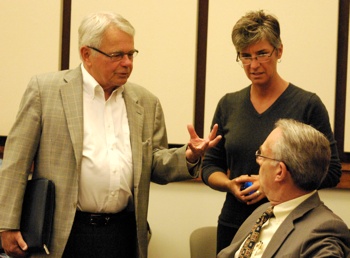
Former Washtenaw County administrator Bob Guenzel and Mary Jo Callan, director of the county’s office community & economic development, talk with former University of Michigan treasurer Norm Herbert before the start of the May 22, 2014 county board working session. Guenzel and Herbert are members of a task force on supportive housing. (Photos by the writer.)
The leadership team of the Task Force on Sustainable Revenues for Supportive Housing Services briefed commissioners on their recommendations, including the goal of building a $50 million endowment over 20 years. Payouts from the endowment would fund supportive services – such as treatment for mental illness and substance abuse – with the intent of addressing the root causes of homelessness. The concept is called permanent supportive housing, and is part of the community’s broader Blueprint to End Homelessness, which was created in 2004 and is being updated.
A possible millage – recommended at 0.25 mills, for no more than 20 years – would help fund supportive services while the endowment is built. County commissioners are being asked to consider putting such a millage on the ballot, possibly in 2015.
Former county administrator Bob Guenzel, a task force member, told commissioners that the task force believes this approach “is absolutely the right thing to do, to end homelessness and keep people housed. We feel very strongly about that. It’s a moral issue.” There’s also a strong business case for this approach when looking at the cost of emergency services and the criminal justice system, compared to the cost of permanent supportive housing, he said.
Several steps have already been taken to achieve these goals. An endowment was established in 2011, with $2.1 million in commitments so far. That amount includes a $1 million gift from the St. Joseph Mercy Health System to create the endowment, which is called the Sister Yvonne Gellise Fund for Supportive Services for Housing. Gellise is the former CEO of St. Joe’s. She’s on the task force and is a founding board member of the Washtenaw Housing Alliance. Another $1 million commitment comes from the Ann Arbor Area Community Foundation (AAACF), where the endowment is housed. AAACF Cheryl Elliott is another task force member. In addition, an anonymous donor has contributed $100,000.
The first fund distribution – of $26,100 – will be made this fall in a competitive grant process. AAACF’s distribution committee – an all-volunteer group – will be responsible for making grant recommendations.
AAACF is also helping provide a three-year, part-time development job to support fundraising for this endowment. Funding for the position will come from the Washtenaw Housing Alliance ($25,000), the AAACF ($5,000) and an anonymous donor ($10,000).
The foundation will post this position in early June, Elliott reported, with the intent of making a hire as soon as possible. The position would be in place until at least mid-2017. The employee will report to AAACF’s vice president for development and donor services, and to the Sister Yvonne Gellise Fund development committee. Members of that committee are the same people who’ve served on the leadership team of the task force, Elliott said. In addition to herself, members are Bob Chapman, Sister Yvonne Gellise, Bob Guenzel, Norm Herbert and Dave Lutton. They hope to get an additional two or three members, she said.
The next steps in this process include a request to the county board to sunset the task force at the June 4 board meeting. The board will also be asked to consider the task force’s recommendation for a millage. “Please use this year and into 2015 to set a millage strategy,” Elliott said.
The task force also stressed the importance of a public outreach and education effort, to help build awareness and support for the endowment.
The task force presentation was attended by five of the county’s nine commissioners. During their discussion, Conan Smith (D-District 9) expressed interest in having the county bond for this initiative – either for the full $50 million, or some portion of that amount. The county now has a triple-A bond rating, Smith noted. [That news had been announced earlier in the day. In general, higher ratings allow organizations to secure better terms for borrowing funds.] “This gives us an opportunity… to actually have some real impact in the community,” Smith said.
Task force members indicated that they hadn’t considered the option of bonding, and Elliott had some concerns about whether it would be legal to use taxpayer dollars for an endowment. They plan to explore the possibility, including consultation with legal counsel.
Background
By way of brief background, Washtenaw County and several other community partners developed the Blueprint to End Homelessness in 2004. Washtenaw Housing Alliance – a consortium of housing and shelter providers, social service agencies, and other groups that provide support services – was given the task of implementing the blueprint.
As part of the implementation efforts, in 2007 the county board created the Task Force on Sustainable Revenues for Supportive Housing Services. Its charge was this: “Explore locally viable long-term revenue sources for the creation and sustainability of supportive housing units and related services.”
The following year, the task force delivered a report and set of recommendations, which the county board adopted on Oct. 2, 2008. [.pdf of 2008 report and recommendations] As summarized in the report, the recommendations are:
Promote Supportive Housing in Washtenaw County: Mobilize new supportive housing service funding for 500 units at an average cost of $5,000/unit/year.
Charter an Implementation Process: Charter a “Phase II” planning and implementation process (via action of the Washtenaw County board of commissioners) to provide continuing leadership and coordination in advancing achievement of the recommendations articulated in this report of the Task Force on Sustainable Revenues for Supportive Housing Services.
Educate the Public: Design and launch a public education campaign focused on the nature and value of supportive services with an aim of raising community support and resources for supportive housing initiatives and the 500‐Unit Plan.
Secure Bridge Funding: Mobilize multi‐systems commitments of up to $1.2 million/year in public‐private resources as “bridge funding,” to support at least 200 units of supportive housing, based on the model being implemented through the Joint Integrated Funding Pilot Project in 2008‐2010. This gap funding will be replaced by new revenue sources, as described within this report.
Re‐allocate Mainstream Services Funding: Advocate with mainstream service systems to mobilize supplemental commitments of up to $500,000 per year in mainstream systems resources [e.g. Community Support & Treatment Services (CSTS), Employment Training & Community Services (ETCS), Head Start) to help address inflation in services costs and expand impact of new community investment in supportive housing services.
Establish User Fees: Establish a strategy to recruit appropriate consumer service contributions (user fees) toward supportive services costs in new units created through the 500‐Unit Plan.
Explore Millage Funding: Explore the development of a millage strategy that will generate the needed amount of dedicated and sustainable revenue over a period of time not to exceed twenty years.
Raise Endowment Funding: Raise $10‐20 million in new private/corporate/foundation funding to create a Supportive Housing Services Endowment (by 2014), sufficient to generate significant continuing revenues dedicated toward the total of ongoing services costs required for 500 new units of housing.
A leadership team was formed to work on the second phase of this effort, and workgroups were established in three areas: (1) public education; (2) millage strategy; and (3) private endowment.
The results of this effort were presented to county commissioners on May 22.
Task Force Presentation
Bob Chapman – the task force chair, CEO of United Bank & Trust, and chair of the Washtenaw Community College Foundation – introduced other members of the task force leadership team, who all attended the May 22 working session:
- Cheryl Elliott, president of the Ann Arbor Area Community Foundation.
- Sister Yvonne Gellise, retired CEO of the Saint Joseph Mercy Health System.
- Bob Guenzel, retired Washtenaw County administrator.
- Norm Herbert, retired University of Michigan treasurer and associate vice president.
- Dave Lutton, president of the Charles Reinhart Company.
Their intent, Chapman said, was to give the county board some background about the Blueprint to End Homelessness and its plan for adding 500 units of permanent supportive housing, as well as the history of the task force. They would also introduce a plan for creating an endowment for supportive services, and would ask that the board formally dissolve the task force at its June 4 meeting.
Bob Guenzel told commissioners that this work goes back over 10 years. [It began when Guenzel was still county administrator. He retired in 2010.] The Blueprint to End Homelessness, which was developed in 2004, included major priorities that the community planned to focus on: (1) homeless prevention, to help keep people secure in their homes; and (2) housing with supportive services.
Regarding housing with services, Guenzel noted that the most difficult people to house are those who need services to help them find housing and to stay housed. The idea is to form a system of care and to engage the community to do that, he said. Dave Lutton chaired the committee on this topic, to develop realistic goals and to articulate why it’s important to provide supportive services.
Lutton spoke next, noting that there are currently about 350 units of permanent supportive housing in the county, so they haven’t met the target of 500 yet. People in these units earn below 30% of the area median income (AMI). The blueprint had called for 250 units for families and 250 units for individuals, with a goal of breaking the cycle of poverty and homelessness, “which is very challenging,” Lutton said.
Permanent supportive housing combines housing with services that people need, Lutton explained. The theory is that if housing is stabilized, there’s a better chance of addressing the underlying needs and challenges that contribute to homelessness, such as substance abuse and mental illness.
The agencies that form the Washtenaw Housing Alliance in reality are dealing with people who are earning about 15% AMI, Lutton said, so these are people who are extremely poor.
Contributing factors to homelessness are many and varied, Lutton said. Factors include lack of employment, drug and alcohol dependencies, physical disabilities, and mental illness – as well as a lack of support systems for the mentally ill, compared to a few decades ago. If people are housed, it’s much easier to tackle these other challenges, he said.
Someone living in permanent supportive housing pays no more than 30% of their income for rent. There are government vouchers and other subsidies that help offset the gap between that amount and the actual cost of housing, Lutton noted. The key factor is that the tenant holds the lease and it’s not limited by a length of tenancy. That’s another way to encourage housing stability, he said.
Permanent supportive housing requires property management, Lutton said, as well as a greater level of cooperation, coordination and communication with the landlord and support service providers. Participating landlords are “admirable, and know that they’re taking on a more challenging population than the mainstream public,” Lutton added, so it’s important to have a safety net – a quick, effective response – when a problem occurs.
The whole system of supportive services is voluntary, Lutton explained. That is, it’s not thrust upon a family or individual. They agree to be open to the services. Services are customized according to each tenant’s needs, he noted, and include case management, crisis intervention, and assistance with all kinds of basic needs, including food and health care. When it’s done well, Lutton said, the tenant begins to feel like part of a community, and becomes connected to other tenants. “That again reinforces permanency,” he said. Lutton noted that tenants of the nonprofit Avalon Housing, which provides permanent supportive housing, stay an average of seven or eight years. A lot of what Avalon does is to create a sense of community for its tenants, he said.
Guenzel told commissioners that the task force believes this approach “is absolutely the right thing to do, to end homelessness and keep people housed. We feel very strongly about that. It’s a moral issue.”
More convincing to some people, Guenzel added, is that there’s a tremendous business case for this approach. Homelessness is very costly for taxpayers, he said. Studies – including research by the Corporation for Supportive Housing – have shown that emergency room and hospital in-patient days decreases by 50% for people who are in permanent supportive housing. Use of emergency detox services decreases by 80%. And earned income – which helps people get back on their feet, Guenzel noted – increases by 50%. So there’s a strong business case for this approach when looking at the cost of emergency systems compared to the cost of permanent supportive housing, he said.
Other community costs are also impacted, Guenzel noted. The average cost for permanent supportive housing is about $40 a day. That compares to the average daily cost of the state prison ($94), county jail ($129), and emergency shelter ($66). That’s a tremendous savings to taxpayers, he said, compared to the costs of the criminal justice system and homeless shelters.
In the past 10 years, new units of permanent supportive housing have come on line, Guenzel said. When the YMCA closed its downtown location, the city lost 100 units of low-income housing, he noted. Other units have come on line, but not all of them include support services. There are currently an estimated 350 units of permanent supportive housing, including about 75% that are managed by the nonprofit Avalon Housing. Most recently, Avalon opened a complex on Pauline Boulevard.
Guenzel noted that single-site complexes like the one on Pauline are more cost effective to offer supportive services, compared to housing at scattered sites with private landlords. But to meet the needs of the community, all types are necessary, he said.
Chapman spoke next, reminding commissioners that in 2007 the county board created the task force. Its charge was to “explore locally viable long-term revenue sources for the creation and sustainability of supportive housing units and related services.” In 2008, the task force delivered a report with recommendations, which was approved by the board.
Those recommendations included starting a second phase of this effort, Chapman said. They created a leadership team and established workgroups in three areas: (1) public education; (2) millage strategy; and (3) private endowment.
Regarding public education, the real intent is to raise the public’s awareness and support for resources that would be needed to sustain supportive housing services. That was necessary, Chapman noted, because the task force’s main recommendation back in 2008 was to seek a voter-approved millage. The millage would provide dedicated revenue for a period not to exceed 20 years.
At the same time, the third initiative was to build a private endowment, Chapman explained. So at the end of a 20-year millage, there would be money available to replace those tax revenues.
However, starting in last 2008 there was a significant change, Chapman noted: “We went through the Great Recession.” That period included a reduction in state and federal funding sources, and “no appetite for a millage,” he said.
Norm Herbert picked up the presentation, noting that fundraising slowed down considerably in 2008 as well. So the task force decided to shift the priority away from a millage and toward building an endowment. They set an initial goal of $17 million. That amount was largely influenced by the amount it would take to fund supportive services for 136 units, Herbert said. They were using an annual cost of $5,000 per unit to provide the services.
The value of an endowment is that it’s permanent, and provides an annual payout in good and bad economic times, Herbert noted. “It’s a reliable source of revenue, and should provide the same or greater purchasing power over the time that these needed supportive services can be provided,” he said.
Given the challenges of building an endowment, it was important to determine “community readiness” for such an initiative, Herbert explained. The firm Hammond & Associates LLC was hired in 2013 to conduct that assessment. They held 21 one-on-one confidential interviews, as well as two group interviews. “We learned through that process that more community education was needed, both on the complexities of homelessness, and secondly, on the workings of an endowment fund and of how that would provide the ongoing needed support,” he said.
They also learned that professional expertise would be needed to assist with building the endowment. “It wasn’t just a matter of going out and asking for support, as we do with annual fund drives,” Herbert said. “This took on a different level of complexity, because people need to understand how an endowment works.”
Herbert reported that the task force has achieved some success so far. They established an endowment in 2011 and raised $2.1 million in commitments. That amount includes a $1 million gift from the St. Joseph Mercy Health System to create the endowment, which is called the Sister Yvonne Gellise Fund for Supportive Services for Housing. Gellise is the former CEO of St. Joe’s, and is a founding board member of the Washtenaw Housing Alliance.
Another $1 million commitment comes from the Ann Arbor Area Community Foundation (AAACF), where the endowment is housed. In addition, an anonymous donor has contributed $100,000.
Cheryl Elliot, the AAACF’s CEO, reported that the fund will disburse revenue annually using a process set up by AAACF with input from the Washtenaw Housing Alliance, the county’s office of community & economic development, and the coordinated funding partners. The first fund distribution, of $26,100, will be made this fall in a competitive grant process, she said.
The AAACF’s distribution committee – an all-volunteer group – will be responsible for making grant recommendations, Elliott said. She added that it looks like an additional $24,500 will be available for grants in 2015.
Regarding staff to help build the endowment, in March of 2014 the AAACF board agreed to contract a three-year part-time development position at the foundation solely to support the fund development efforts for this endowment. Up to $40,000 will be needed annually for this job, Elliott said, and will come from the Washtenaw Housing Alliance ($25,000), the AAACF ($5,000) and an anonymous donor ($10,000).
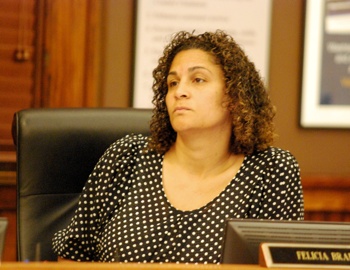
Felicia Brabec (D-District 4) was a member of the task force on sustainable revenues for supportive housing services.
The foundation will post this position in early June, Elliott reported, with the intent of making a hire as soon as possible. The position would be in place until at least mid-2017. The employee will report to AAACF’s vice president for development and donor services and the Sister Yvonne Gellise Fund development committee. Members of that committee are the same people who’ve served on the leadership team of the task force, Elliott said. In addition to herself, members are Bob Chapman, Sister Yvonne Gellise, Bob Guenzel, Norm Herbert and Dave Lutton. They hope to get an additional two or three members, she said.
The goals for the endowment itself are large but achievable, Elliot told commissioners. Over the next five years, the goal is to raise $5 million in gifts and pledges. For the seven to ten years after that, the goal is to raise $17 million. The long-term goal is to raise $50 million in 20 years – a combination of gifts, pledges and return on investments.
Elliott outlined next steps in the process, which includes asking the county board to sunset the task force at the June 4 board meeting. The board will also be asked to consider the task force’s recommendation for a millage. “Please use this year and into 2015 to set a millage strategy,” she said.
Gellise wrapped up the presentation, joking that “I’m getting a little tired of hearing my name – but at least it’s in connection with something good.” She hoped that commissioners saw the connection between having a home and improving the health of this community – referring to a presentation earlier in the working session by the county’s health officer, Ellen Rabinowitz.
Providing supportive services for housing is not only successful in keeping people housed, Gellise said, but is also cost-effective, with a good return on resources invested. “The bottom line – and I am a bottom-line person: It is the right thing to do. We need to do it,” she said.
Gellise thanked commissioners for their support, and asked them to “keep a millage on your radar screen.”
Board Discussion
Several of the five commissioners who attended the working session thanked the task force for their service.
Conan Smith (D-District 9) asked for clarification about the amount needed per unit to provide housing and supportive services. The $5,000 per unit annually is the cost to provide supportive services, to eventually be covered by the endowment. The $40 per day per unit is estimated rent – to be covered by both the tenant and any available subsidy.
Smith elicited from Cheryl Elliott the fact that the Ann Arbor Area Community Foundation currently manages about $76 million in total assets. Elliott said the goal is to get an 8% return on investments to allow for a 5% spending policy and 3% inflation. The goal is to preserve the inter-generational equity or purchasing power of a gift or a fund, she said. So if someone set up a $10,000 endowment 50 years ago, “that fund had better be more than $10,000 today and have been paying out grant dollars every year,” Elliott said. AAACF staff and volunteers pay serious attention to that, she added.
Responding to additional queries from Smith, Elliott reported that AAACF was founded in 1963 and over those years the return on investments has varied. The way that funds are invested has also changed, she noted. Today the portfolio is very diverse, everything from traditional U.S. stocks to emerging markets and alternative investments – hedge funds, private equity, and real assets. Elliott noted that Norman Herbert sits on the foundation’s finance and investment committee.
Herbert said that over the last 20 years, AAACF has hit its target of an 8% return. In 2008, the portfolio lost 30.8% of its value, Elliott added, but the value was recouped two years after that. However, because the payout policy is based on a 16-quarter rolling average, AAACF was able to continue making grant payouts during that time, she noted.
Smith said he asked these questions to recognize that the AAACF has been doing this work for a long time, and has been quite successful.
Board Discussion: Bond vs. Millage
Conan Smith asked Bob Guenzel whether the task force had considered bonding as an option, rather than a millage. What if the county bonded for $50 million toward this initiative?
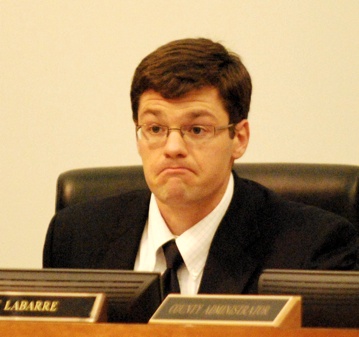
Andy LaBarre (D-District 7), one of the commissioners representing Ann Arbor, is chair of the board’s working sessions.
Guenzel replied that there would still need to be a revenue stream to pay off those bonds. Smith indicated that if the county borrows at a 2% interest rate and invests the money, getting a return of 8%, then bonds could be leveraged to pay off the debt. “It seems to me like we might be able to achieve the greater community goal in a less costly way, perhaps, in a partnership like that,” Smith said. Guenzel said they’d certainly be willing to consider it.
Smith reported that he and Mary Jo Callan – director of the county’s office of community & economic development – have been exploring the concept of “social impact” bonds as a mechanism for financing social programs. He said it would be worth taking time to look at the potential of bonding. It seemed to him like bonding would require a substantially lower revenue stream to pay it off.
The county now has a triple-A bond rating, Smith noted. [That news had been announced earlier in the day. In general, higher ratings allow organizations to secure better terms for borrowing funds.] “This gives us an opportunity, if we’re going to do projects that scale, to actually have some real impact in the community,” Smith said.
Herbert said there might be some arbitrage issues coming into play that could be a concern, so they’d need to look at that. He indicated that the possibility could be explored.
Smith then asked if the county is currently contributing to this initiative. Amanda Carlisle, executive director of the Washtenaw Housing Alliance, replied that the county provides support through its participation in coordinated funding. Avalon Housing, for example, is getting $85,000 from the county this year through coordinated funding. Carole McCabe, Avalon’s executive director, noted that the amount is a decrease from last year.
Guenzel described funding for housing and supportive services as a “hodge-podge,” including federal grants as well as the local coordinated funding.
Smith asked if the county’s contribution to Avalon Housing would be diminished, if the endowment were fully capitalized. Is that the intent? Guenzel replied that it might be the outcome, if the endowment is large enough. But “that’s a very long way off,” he added.
“I’m not so sure it is,” Smith responded. For the sake of argument, Smith said, let’s assume the county is making a $100,000 annual investment in supportive housing now. If the county wants to ensure that same amount is provided in perpetuity, adjusted for inflation, then they’d need to give the endowment $2 million, he said. Herbert clarified that Smith’s calculation assumes a 5% distribution rate, and that 4% would probably be more reasonable to assume.
Smith suggested that the county give the endowment $2 million, and also somehow ensure that its current grantees – like Avalon Housing – would be held harmless in terms of support from the county, until the remainder of the endowment is built.
Cheryl Elliott told Smith that in Michigan, it’s not legal to put public taxpayer dollars into an endowment like this. Herbert noted that these are issues that would need to be researched.
Dave Lutton reported that the task force has been working on the understanding that a 0.25 mill tax would fund 500 units of permanent supportive housing. “We don’t think that 500 units is all that’s needed in Washtenaw County in terms of housing or permanent supportive housing, but it’s a great leap from where we’ve been,” he said. So that’s the first target of this plan.
Elliott added that the idea of a millage stems from looking at what other communities are doing, and at what would work best for Washtenaw County – a permanent endowment. Herbert noted that the intent is to build the endowment so that after a period of time, the millage is no longer needed. The goal of $50 million would support 500 units, which was part of the original Blueprint to End Homelessness.
Smith ventured that there are some “interesting financial opportunities for the county to be a partner in this strategy going forward.” That might include a millage, bonding, or potentially using county funds in an endowment-type effort, he said. This is a public good and a public responsibility, Smith added, and it’s something that taxpayers should want to be a part of.
Andy LaBarre (D-District 7) noted that an advisory committee will be looking at the use of the county-owned Platt Road property, a 13.5-acre site at 2260 and 2270 Platt Road. He thought there was an opportunity for affordable housing solutions at that location, and he asked the task force leadership team to consider advocating for that.
Related to the possible funding options, LaBarre asked how seriously should the county look at the possibility of bonding – assuming that a millage isn’t politically viable. Would the county’s upgraded credit rating have any kind of effect on that decision?
Herbert replied that legal counsel should be involved in helping to determine whether bonding is an option.
LaBarre then asked what the fallback plan would be, if a millage isn’t pursued or if voters reject it. Herbert responded: Under that scenario, the only real option would be to build the endowment through private donations. That’s an important part of the education initiative that the task force outlined, he said.
LaBarre wondered if there was any hope of support from the state or federal governments. “Not currently,” Herbert replied.
Felicia Brabec (D-District 4), who was part of the task force, thanked the leadership team for their work. She was amazed at their ingenuity, passion and dedication.
Yousef Rabhi (D-District 8) also thanked the task force. A lot of things that the county is celebrating now are due to work that’s happened in the past, he said. Former county administrator Bob Guenzel had laid a lot of groundwork for this, Rabhi added. There are a lot of challenges, he noted, but the community now understands what the problem is and is seriously tackling it.
There are a lot of creative ideas, Rabhi said. He agreed with LaBarre that there’s a great opportunity at the Platt Road site. It might not result in a cash contribution from the county, but the site could be used for supportive housing, affordable housing or even mixed-income housing, he said. The 13.5 acres might be more valuable if used for housing – more so than if it were sold, he noted.
Rabhi thought there was a role for commissioners to play, even as individual community members helping to raise awareness of this initiative and to help build the endowment. “We can and should certainly play an advocacy role in helping to lead the community movement toward making that endowment a reality.”
Present: Felicia Brabec, Andy LaBarre, Yousef Rabhi, Conan Smith, Dan Smith.
Absent: Kent Martinez-Kratz, Ronnie Peterson, Alicia Ping, Rolland Sizemore Jr.
The Chronicle relies in part on regular voluntary subscriptions to support our coverage of public bodies like the Washtenaw County board of commissioners. Check out this link for details: Subscribe to The Chronicle. And if you’re already supporting us, please encourage your friends, neighbors and colleagues to help support The Chronicle, too!





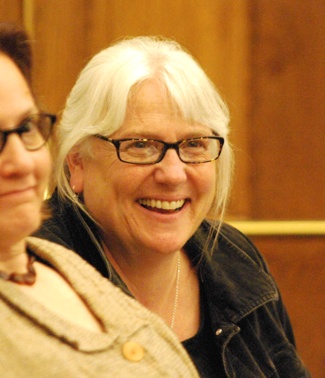
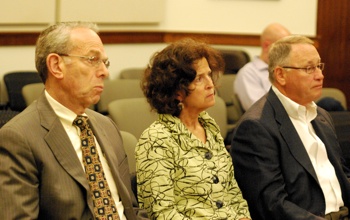
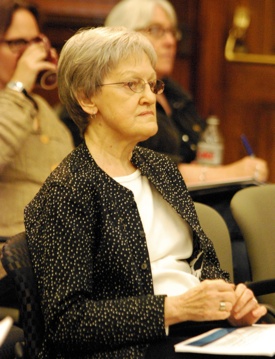

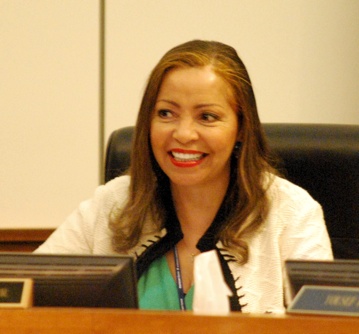

“Smith indicated that if the county borrows at a 2% interest rate and invests the money, getting a return of 8%, then bonds could be leveraged to pay off the debt.”
I read this after mulling about the problems the endowment fund might have with managing its investments. The whole concept of an endowment as I understand it is that one amasses a certain amount of capital and then spends the income from the capital on the desired activity. But there are expenses (the financial managers of such funds are usually paid fairly well) and the investment picture for fixed-income returns is rather limited right now. With interest rates so low, how would the fund be able to assure enough income to achieve its goals?
Conan Smith’s suggestion that magic money would appear from the bonds (a very optimistic rate of return) is stunning. He would encumber the county with bonds essentially on a gamble that the most optimistic scenario would result.
Small correction please in a photo caption – Verna McDaniel is the County Administrator, not a County Commissioner. [Ed. note: Yes, that's now corrected.]
The goal of 500 unites of housing with supportive services is worthy and do-able. A privately-funded RESTRICTED endowment (that is, restricting to supporting a specific activity, in this case rent & social work) would relieve taxpayers of one kind of expense, just as endowing county parks or road maintenance would relieve taxpayers of future expense.
The issue is bonding. The purpose of bonding is to spread the cost of long-lived physical assets over the life of the asset, so that people living here today do not pay the full cost of building, say, a bridge that will be used by people living here 20 years from now. It’s one thing to say that a bridge will be used for 30 years, so we should spread its cost over 30 years. It’s another thing to say that we should pay today, for rent and social services to be delivered 20 years from now, with no benefit to anyone in the meantime. It’s not obvious that this is the purpose of public taxation.
Funds raised by selling bonds are a VERY different thing from an endowment. An endowment’s purpose is to permanently support some annual OPERATION. A bond exists to spread the cost of a capital asset to users per the life of the asset.
A further issue is the inflexible nature of a restricted endowment. Should priorities change in the future – better medications for various mental illnesses developed in the future, for example – a fund dedicated only to 500 units of supportive housing would not be available for other such uses. For private money, this is fine. For tax dollars, this is not. A millage to fund social work and rent can be repealed or altered as conditions change. A millage raised to fund a particular bond issue may not be so flexible, and in any case the county is obliged to pay for bonds it sells regardless of any particular millage.
I applaud Mr. Smith’s eagerness to find ways to use the county’s AAA bond rating for the benefit of county residents as well as his desire to end homelessness, but if selling bonds to fund current services is not a good idea (and it isn’t), then selling bonds to fund services to be delivered a generation from now is a more not-good idea.
This money can be raised privately, and I will contribute.
John Floyd
Republican Candiate for County Commission
District 9
“Conan Smith’s suggestion that magic money would appear from the bonds (a very optimistic rate of return) is stunning. He would encumber the county with bonds essentially on a gamble that the most optimistic scenario would result.”
Great comment!
After rereading all this, I note that the AAACF has a history with an endowment fund. They have a historical return rate and have successfully made grants with that. They also had a marked loss in 2008 but were able to recoup the losses in a couple of years. Their investment board is to be congratulated. That does not mean that there is not risk or that future investments will be as successful.
Is the intention that AAACF would also host the endowment fund?
I thought that John Floyd got right to the point – if we perceive housing and homelessness to be a public service, we should not be bonding for it, but pay for it via a current revenue, whether a millage or a general fund allocation. That is true for all public services.
Conan Smith has previously expressed willingness to make major decisions on redirection of public monies without a vote of the public. (The road tax idea.) This is another example. A millage vote would be reasonable, but a pre-emptive bond sale would not.
Re. “Is the intention that AAACF would also host the endowment fund?”
Yes, the fund is already established and hosted by AAACF. Here’s the relevant graf from the intro:
If you follow the link to the Gellise Fund on the AAACF website, there’s a bit more background.
Slight amendment, the County department of Employment Training and Community Services (ETCS) was merged into the Office of Community and Economic Development (OCED) in January of 2012.